Turkey, officially called the Republic of Turkey, is a vibrant and culturally rich country spanning the continents of Europe and Asia. With its unique geographical location, historical significance, and diverse landscapes, Turkey offers an exciting blend of old and new, East and West. Places to visit in Turkey with family Today, we will discuss its landmarks, history, geographics, government, principal places of tourist attractions, and much more.

Fast Facts
Geography: A transcontinental country borders eight countries with coastlines on three oceans.
Capital: Ankara.
The largest city, Istanbul, is spread across Europe and Asia.
History: Rich heritage, home to ancient civilizations and the Ottoman Empire.
Cultural Fusion: Blending of Eastern and Western influences.
Language: Turkish, part of the Turkic family, is written in the Latin alphabet.
Religion: Mainly Sunni Islam, with secular state principles.
Economy: A mixed economy focusing on manufacturing, agriculture, and tourism.
Tourism: Popular for historical sites, natural scenery, and vibrant culture.
Modernization: Significant modernization while maintaining traditional charm and hospitality.
Geography
Turkey has many different landscapes. It is found on two continents, Europe and Asia. It borders eight other countries and has coastlines on three seas: the Aegean, Mediterranean, and Black Sea.
Flat areas near the coast are suitable for growing things, and in the middle is a large plateau called the Anatolian Plateau.
In the east are large mountains, such as Mount Ararat, Turkey’s highest mountain. Important rivers like the Tigris and Euphrates also exist.
Mount Ararat, located in eastern Turkey near the borders with Iran and Armenia, is the highest peak in the country, standing at over 5,100 meters (16,500 feet). Other notable mountain ranges include the Taurus Mountains in the south and the Pontic Mountains in the north.
The weather changes a lot depending on where you are. It is hot and sunny in some places, while cold and rainy in others. Turkey’s geography is diverse and essential to its history, culture, and economy.
People and Culture
Turkey’s people and culture are very diverse and exciting. It has a long history and occupies a unique position between Europe and Asia.
Turkey has more than 80 million people. Most are Turks, but there are also many Kurds, Arabs, and other groups. Turkey has been influenced by many different civilizations, such as the Greeks, Romans, Byzantines, and Ottomans.
Turkish culture is a mixture of many traditions, customs and languages. Turkish is the primary language and is written in the Latin alphabet. Most people in Turkey follow Islam, but Turkey is also a place where people can follow any religion.
Turkish food is famous all over the world. They make delicious dishes like kebabs, meze, baklava, and turkey delights. Turkish people are known to be very friendly and welcoming.
Families are essential in Turkey; they often live together or close to each other. Turkish arts and crafts, such as pottery and carpet weaving, have long been passed down in families.
Turkey celebrates many festivals and holidays, and people love to eat, dance, and have fun together. Overall, Turkey has many different cultures, traditions, and friendly people.

History
Turkey has a long history filled with many different civilizations. These civilizations, such as the Hittites, Greeks, Romans, Byzantines, and Ottomans, all lived in Turkey at various times.
They built impressive buildings, created beautiful art, and developed unique cultures that still influence Turkey today. Istanbul, formerly known as Constantinople, is one of the most famous cities in Turkey.
It was once the capital of the Byzantine and Ottoman empires, making it a significant city in history. The Ottoman Empire was a powerful empire that ruled Turkey and other parts of the world for many years.
They spread their territory to Europe, Asia, and Africa. But by the 1900s, the Ottoman Empire began to weaken, and after World War I, it finally collapsed.
After the fall of the Ottoman Empire, Turkey underwent significant changes. During this time, Mustafa Kemal Atatürk, a leader and soldier, played a key role.
He led the Turkish War of Independence against foreign forces and founded the Republic of Turkey in 1923. Atatürk became Turkey’s first president and made many changes to modernize the country.
He introduced new laws based on European ideas, changed the writing system to use the Latin alphabet instead of Arabic, and separated religion from government.
Atatürk’s ideals of a secular (non-religious) and democratic country continue to influence Turkey today. His legacy lives on through his ideas on modernism, nationalism, and the importance of keeping religion separate from politics.
Government
Turkey operates on a system known as a parliamentary republic. This means the people have a say in how the country is run. The leader of Turkey is called the President, who is elected by the people every five years. Currently, in 2024, Recep Tayyip Erdoğan is the President.
He has been in charge since 2014. The President works closely with the Prime Minister, who is chosen by the President and helps make critical decisions for the country.
The main legislative body in Turkey is the Turkish Parliament, also known as the Grand National Assembly. It consists of 600 members elected by the people. These members write and debate laws and represent the interests of those who voted for them.
Turkey prides itself on its system, allowing many political parties to participate. This means that people have a choice about who they want to lead.
It is like a competition, with different parties sharing their ideas and policies. This competition helps keep things fair and allows everyone to have their say.
Turkey also has a group of judges who ensure that laws are followed. They are called the Judiciary, and they are independent of the government.
Their job is to ensure everyone’s rights are protected, and the country remains fair. Although Turkish politics sometimes change, the government is committed to upholding democratic principles and ensuring everyone is treated fairly.
Best Places to Visit in Turkey with family:
Discover the wonders of Turkey with our guide to the best places to visit in this fascinating country. From the historic streets of Istanbul to the picturesque landscapes of Cappadocia and the breathtaking beaches of the Turquoise Coast, Turkey offers many unforgettable experiences for every traveler.
Explore ancient ruins, enjoy delicious cuisine, and immerse yourself in this fascinating destination’s rich culture and hospitality. Start planning your Turkish adventure today! these are the best places to visit in turkey with family.
So come with us, we will provide a good travel guide to these destinations.
Hagia Sophia :
Hagia Sophia, also known as Hagia Sophia in Turkish, is one of the most famous landmarks in Istanbul, Turkey, and is a masterpiece of Byzantine architecture. Originally built as a Christian cathedral in the 6th century AD during the reign of Emperor Justinian I, it served as the principal church of the Byzantine Empire for nearly a thousand years.
In 1453, after the Ottoman conquest of Constantinople (present-day Istanbul), Sultan Mehmed II converted the Hagia Sophia into a mosque. Islamic features such as minarets and arches were incorporated into the structure, while its magnificent mosaics and Christian iconography were covered or removed.
Hagia Sophia was a prominent mosque in the Ottoman Empire for centuries, symbolizing Islamic power and architectural grandeur. However, in 1935, under the leadership of the founder of the Republic of Turkey, Mustafa Kemal Atatürk, it was secularised and turned into a museum as part of Turkey’s modernization efforts.
In July 2020, the Turkish government decided to convert Hagia Sophia back into a mosque, sparking international debate and controversy.
Today, it serves as a mosque and a museum, attracting visitors worldwide for its architectural beauty, historical significance, and the intricate blend of Christian and Islamic elements within its walls. Come to appreciate.
Hagia Sophia is a testament to Istanbul’s cultural and religious diversity, symbolizing its rich history and architectural heritage. Its status as a UNESCO World Heritage Site underscores its global value and importance as a valuable cultural monument.

Istanbul:
Best for ancient sites and modern neighbourhoods
Istanbul, Turkey, is a fantastic city that blends the old and the new very well. It is famous for its long history and lively atmosphere.
You can visit ancient sites such as the Hagia Sophia and the Blue Mosque in Istanbul. These places are like time machines, taking you back to when emperors and sultans ruled the city. You can walk around these old buildings and imagine what life was like centuries ago.
But Istanbul is not just about the past. It is also a modern city with vibrant neighborhoods. Beyoglu and Kadikoy are buzzing with trendy cafes, excellent shops, and delicious food.
You can wander through bustling markets, try delicious street food, and experience the city’s exciting nightlife. These modern neighborhoods contrast with ancient ones, showing how Istanbul has changed while maintaining its unique character.
Overall, Istanbul is a city where you can explore ancient history and enjoy modern life in one place.
Whether you’re checking out old landmarks or wandering the hip neighborhoods, Istanbul offers an unforgettable adventure that combines the best of both worlds.
Planning tip: You should spend your entire vacation in Istanbul, but if you can, try to explore Turkey for more amazing adventures.
Cappadocia:

Best for its unique landscape
Cappadocia, Turkey, is famous for its fantastic scenery, which you won’t find anywhere else. Imagine large areas of rocky land filled with strange shapes carved by wind and water over the years.
These unusual rocks, called fairy chimneys, make Cappadocia look like a fairy tale.
Those visiting Cappadocia can take an early morning hot air balloon ride to see the landscape from above. Colorful balloons gently float over the rocky hills and valleys, offering a magical sight.
You can also explore Cappadocia on foot or horseback. This allows you to discover hidden caves, old churches, and even underground cities carved into the soft rock.
But Cappadocia is not just about its natural beauty. It is also full of history and culture. Many ancient civilizations lived here, such as the Hittites and the Romans.
They built impressive buildings and carved intricate designs into rocks. Today, their legacy can be seen all around Cappadocia.
Apart from its unique landscape and history, Cappadocia has a friendly and relaxed atmosphere. There are cute little villages, small hotels, and delicious local cuisine waiting to be enjoyed.
Whether watching the sunrise from a hot air balloon or exploring hidden caves, Cappadocia is a place you’ll never forget. Its unique beauty and charm will leave you mesmerized and wanting to return for more.
Turquoise Coast:
Best for history lovers and beaches
Turquoise Coast in Turkey is fantastic for people who love history and beaches. It is famous for its clear blue waters, beautiful sandy beaches, and charming seaside villages.
If you’re into history, you’ll love exploring ancient sites along the turquoise coast. There are many great things to see, such as the old cities of Ephesus and Patara and the ancient rock tombs in Dalian. You can also visit old theatres, temples, and forts that give you a glimpse of the past.
And if you’re a beach lover, you’re in luck! The Turquoise Coast has some of the best beaches in the Mediterranean. Whether you prefer quiet coves with cliffs or busy resort towns with lots of action, you’ll find the perfect place to swim, sunbathe, or try water sports like snorkeling and sailing.
But the Turquoise Coast isn’t just about history and beaches. It is also an excellent place with a relaxed atmosphere. You can enjoy delicious seafood at seaside restaurants, shop for souvenirs at colorful markets, and meet friendly locals who make you feel right at home.
Whether exploring ancient ruins, relaxing on the beach, or just soaking up the coast’s beauty, Turquoise Beach is a fantastic place to visit. It perfectly blends history, culture, and natural beauty, leaving you with unforgettable memories.
Blue Mosque:

The Blue Mosque is best for spiritual tranquillity.
The Blue Mosque, also known as the Sultan Ahmed Mosque, is a famous landmark in Istanbul, Turkey. It is known for its beautiful blue tiles on the inside, making it look unique.
Sultan Ahmed I built it in the 17th century. People believe it is a fantastic example of Ottoman Empire architecture. It has a large dome, tall minarets called minarets, and many beautiful tile designs.
When you visit the Blue Mosque, you first see a large courtyard with columns and beautiful water fountains. Inside, there is a large room where people pray. The walls are covered with thousands of blue tiles, which is why it is called the Blue Mosque. It feels calm and peaceful inside.
The Blue Mosque is still used for daily prayers, but tourists can visit it. They only need to dress modestly and show respect as it is a sacred place.
Overall, the Blue Mosque is an extraordinary part of Istanbul. It is about its beautiful design and importance as a place of worship and culture for people worldwide.
Best Time to Visit Turkey
The best time to visit Turkey depends on what you want to experience and where you plan to go.
The weather is mild in spring (April to June), and nature comes alive with blooming flowers and lush green landscapes. It’s the perfect time to enjoy sightseeing, sightseeing, and outdoor activities without the scorching summer heat.
Summer (July to September) is perfect for beach lovers, with warm temperatures and clear skies along the coast. It’s also tourist season, so that popular spots can be crowded. However, if you’re looking for a lively atmosphere and vibrant nightlife, summer is the time to come.
Autumn (October to November) brings cooler temperatures and fewer crowds, making it the best time to explore Turkey’s cities, cultural sites, and natural wonders. Fall foliage adds a colorful backdrop to your trip, especially in Cappadocia.
Winter (December to February) is less touristy. Still, it’s the best time to experience Turkey’s rich cultural heritage, indulge in traditional Turkish cuisine, and enjoy winter sports at places like Uludağ and Mount Erciyes. Istanbul and other cities also light up with festive decorations during the holiday season.
Turkey offers something special every season, so the best time to visit depends on your interests and preferences. Whether you’re looking for sun-drenched beaches, historical treasures, or winter adventures, there’s never a dull moment in Turkey.
Transportation
Air
Getting to Turkey by plane is easy, with several major international airports serving the country. The main gateway is Istanbul Airport (IST), one of the largest and busiest airports in the world, serving flights from many international destinations.
Another important international airport is Sabiha Gokcen Airport (SAW) on the Asian side of Istanbul. Both airports have direct flights from major cities in Europe, Asia, the Middle East, and America.
Once you arrive in Turkey, domestic flights are a great way to explore the country quickly and comfortably. Turkish Airlines, the national carrier, has an extensive network of domestic flights connecting major cities such as Ankara, Izmir, Antalya, and Trabzon.
Other airlines, such as Pegasus Airlines, AnadoluJet, and SunExpress, offer many domestic flights, giving travelers plenty of options.
Domestic flights can be booked through airline websites, travel agencies, or online travel platforms. They are usually cheap and have regular schedules, making it easy to plan your trip.
Significant airports within Turkey include:
– Istanbul Airport (IST) and Sabiha Gokcen Airport (SAW) in Istanbul
– Esenboga Airport (ESB) in Ankara
– Adnan Menderes Airport (ADB) in Izmir
– Antalya Airport (AYT) in Antalya
– Trabzon Airport (TZX) in Trabzon
These airports are well connected by public transportation, including buses, taxis, and sometimes metro lines, making it easy to get to your accommodation or other locations within the city.
Flying within Turkey allows you to make the most of your time and see more of the country’s beautiful landscapes, historic sites, and vibrant cities.
Whether visiting the ancient ruins of Ephesus, the fairytale chimneys of Cappadocia, or the stunning beaches of the Turquoise Coast, domestic flights make your travels efficient and enjoyable.
Train
Traveling by train in Turkey is a beautiful and comfortable way to explore the country. Turkish State Railways (TCDD) operates an extensive network connecting major cities and regions. You can book tickets online, at the station, or through travel agencies.
Types of Trains:
High-speed trains (YHT), which are fast and comfortable, connect cities such as Istanbul, Ankara, Konya, and Eskişehir.
Main Line Trains: Connect other major cities and offer scenic routes.
Regional trains serve local destinations and are ideal for short trips and exploring smaller towns.
Key Stations:
Istanbul: Sirkeci (European side), Haydarpasa (Asian side, under renovation), Pendak (high-speed trains).
Ankara: Ankara Gar.
Izmir: Basmane Station.
Konya: Konya Station.
Eskişehir: Eskişehir Station.
Other cities: Adana, Gaziantep, Kayseri, and more.
Travel Tips:
Arrive 30 minutes before departure.
Choose from Economy, Business, and Sleeper cabins.
Travel light for convenience.
Bring snacks and water for regional trains.
Overall, train travel in Turkey allows you to enjoy beautiful scenery, interact with locals, and experience the country comfortably.
Boat system in Turkey
Istanbul Ferries:
Bosphorus Ferries: Connect the European and Asian sides with great views.
Golden Horn Ferries: Travel along the Golden Horn connecting neighborhoods.
Sea Buses (İDO): Fast ferries to nearby cities and islands such as Bursa and Princes Islands.
Suggestions
Check the schedule and buy tickets online or at the terminals.
Ferries vary from basic to luxury.
Travel during the day for the best views.
Advantages:
Avoid traffic.
Enjoy the nature trails.
Easy access to islands and coastal destinations.
Turkish ferries offer easy and scenic journeys along the coasts and waterways.
Turkey Visa Requirements
Turkey has specific visa requirements depending on your nationality and the purpose of your visit. Here’s an overview of the general requirements and essential things to know:
Types of Visa:
- Tourist Visa: This is for sightseeing and short visits.
- Business Visa: For business-related activities.
- Student Visa: To study at a Turkish institution.
- Work Visa: For employment in Turkey.
General Visa Requirements:
Passport: Must be valid for at least six months beyond your planned stay.
- Application Form: Completed and signed visa application form.
- Photographs: Two recent passport-size photographs.
- Itinerary: Proof of flight bookings and travel plans.
- Accommodation details: Proof of hotel reservation or invitation letter if staying with friends or family.
- Financial proof: bank statement or proof of sufficient funds for your stay.
- Visa Fee: Payment of visa application fee.
- Health Insurance: Proof of travel health insurance may be required.
Additional requirements for specific visas:
- Student visa: Acceptance letter from Turkish educational institution.
- Work visa: Job offer letter and approval from the Turkish Ministry of Labor and Social Security.
- Business Visa: Invitation to Turkish company or business contacts.
E-Visa:
Turkey offers an e-Visa, which can be obtained online, for citizens of many countries. This is usually for short stays for tourism or business purposes. An e-visa is quick and easy, allowing you to apply online, pay the fee, and receive your visa electronically.
Important things to know:
- Visa on Arrival: Some nationalities can obtain a visa on arrival, but receiving an e-visa in advance is safer.
- Extension of stay: If you need to stay longer than your visa allows, you must apply for an extension at the local immigration office in Turkey.
- Residence permit: If you plan to stay in Turkey for more than 90 days in 180 days, you must apply for a residence permit.
- Currency: The official currency is the Turkish Lira (TRY). Credit cards are widely accepted, but small businesses should carry some cash.
- Language: Turkish is the official language. While English is spoken in tourist areas, learning a few basic Turkish phrases can be helpful.
- Local customs: Respect local customs and traditions, especially in more conservative and religious areas.
- Health and Safety: Make sure you have adequate travel health insurance. Be aware of local safety advice and take standard precautions to protect your belongings.
Abstract
Check whether you need a visa to visit Turkey based on your nationality and the purpose of your visit.
Collect the necessary documents and apply for a visa online or at a Turkish consulate. Remember to consider health insurance, local customs, and safety measures to ensure a smooth trip.
FAQs
Is Turkey Asia or Europe?
Turkey is a transcontinental country with a small part in Southeast Europe and the majority in West Asia. The city of Istanbul spans both continents.
Why is Turkey now called Türkiye?
Turkey is now officially called “Türkiye” to reflect the country’s name in Turkish and to distinguish it from the bird of the same name in English. The change was part of a rebranding effort led by the Turkish government.
Is Turkey expensive to visit?
Travelling to Turkey can be relatively cheap compared to many Western countries, but costs can vary based on your travel style and choices.
While luxury accommodations and high-end dining can be expensive, budget options such as local dining, public transportation, and mid-range hotels are usually quite affordable.
Is Turkey a developed country?
Turkey is considered a developing country. Its economy is mixed, with modern industries and traditional agriculture. Although it has made significant progress in economic development and infrastructure, it still faces challenges such as income inequality and regional disparities.
What is Turkey’s Religion
The predominant religion in Turkey is Islam, with the majority of the population identifying as Sunni Muslims.

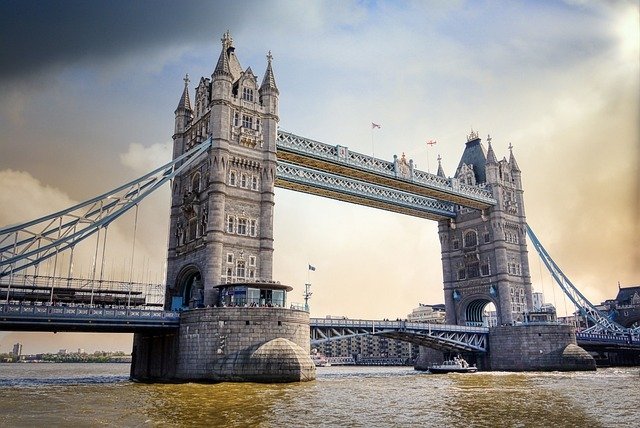

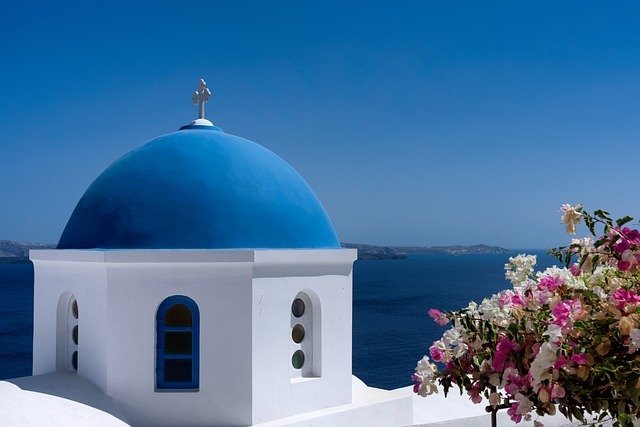

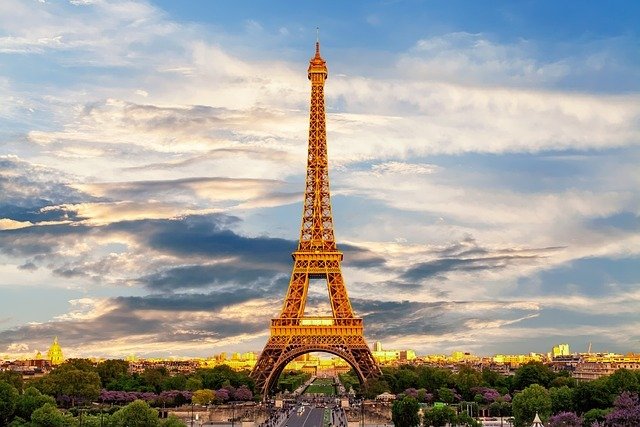
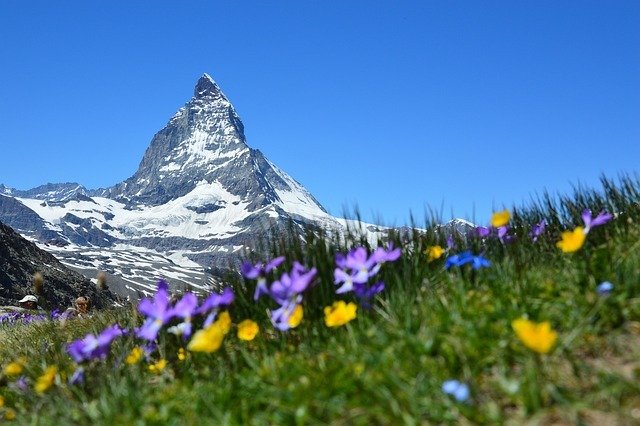



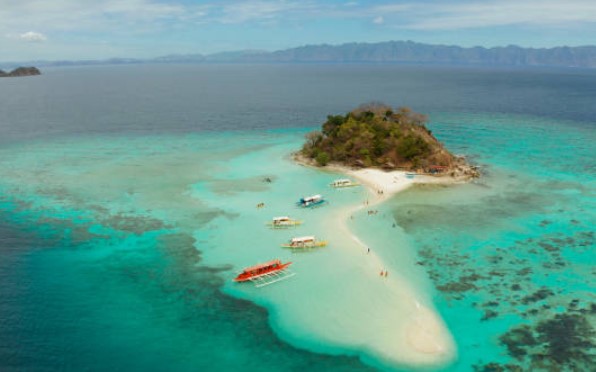
33 Responses
I am often to blogging and i really appreciate your content. The article has really peaks my interest. I am going to bookmark your site and keep checking for new information.
Lovely just what I was searching for.Thanks to the author for taking his clock time on this one.
fabuloso este conteúdo. Gostei muito. Aproveitem e vejam este conteúdo. informações, novidades e muito mais. Não deixem de acessar para saber mais. Obrigado a todos e até a próxima. 🙂
I¦ll right away grasp your rss feed as I can not find your email subscription link or e-newsletter service. Do you’ve any? Please let me realize in order that I could subscribe. Thanks.
newsletter is attached dear.
After all, what a great site and informative posts, I will upload inbound link – bookmark this web site? Regards, Reader.
My husband and i were really ecstatic that Edward managed to deal with his investigation from the precious recommendations he acquired while using the site. It’s not at all simplistic just to be releasing concepts which usually people today have been trying to sell. Therefore we consider we have got the writer to be grateful to for that. The illustrations you’ve made, the simple site navigation, the relationships you make it easier to foster – it’s got many awesome, and it’s assisting our son and the family imagine that this theme is cool, and that’s exceptionally pressing. Thank you for the whole lot!
Hello There. I discovered your blog the usage of msn. This is a very neatly written article. I’ll be sure to bookmark it and return to learn more of your useful info. Thanks for the post. I’ll definitely return.
hello!,I love your writing so much! proportion we keep in touch more approximately your article on AOL? I require a specialist in this area to unravel my problem. Maybe that is you! Having a look forward to look you.
Hello! I just would like to give a huge thumbs up for the great info you have here on this post. I will be coming back to your blog for more soon.
Very nice layout and great articles, hardly anything else we require : D.
The subsequent time I learn a weblog, I hope that it doesnt disappoint me as much as this one. I mean, I know it was my choice to read, however I truly thought youd have something interesting to say. All I hear is a bunch of whining about something that you can fix in the event you werent too busy looking for attention.
Very interesting points you have remarked, regards for putting up.
I really wanted to compose a quick remark in order to say thanks to you for all the magnificent techniques you are giving at this site. My considerable internet investigation has at the end been paid with professional facts and techniques to go over with my best friends. I would claim that we site visitors are unequivocally lucky to dwell in a decent place with very many wonderful people with great principles. I feel somewhat grateful to have seen your web site and look forward to so many more cool minutes reading here. Thank you once again for everything.
You made some nice points there. I did a search on the matter and found mainly people will have the same opinion with your blog.
I am not sure where you’re getting your information, but great topic. I needs to spend some time learning much more or understanding more. Thanks for magnificent information I was looking for this information for my mission.
When I initially commented I clicked the “Notify me when new comments are added” checkbox and now each time a comment is added I get four e-mails with the same comment. Is there any way you can remove people from that service? Cheers!
I am very happy to read this. This is the type of manual that needs to be given and not the accidental misinformation that’s at the other blogs. Appreciate your sharing this greatest doc.
When I originally commented I clicked the “Notify me when new comments are added” checkbox and now each time a comment is added I get three e-mails with the same comment. Is there any way you can remove me from that service? Bless you!
Some really fantastic articles on this web site, thanks for contribution. “When he has ceased to hear the many, he may discern the One – the inner sound which kills the outer.” by H Hahn Blavatsky.
Hi, I think your blog might be having browser compatibility issues. When I look at your blog in Safari, it looks fine but when opening in Internet Explorer, it has some overlapping. I just wanted to give you a quick heads up! Other then that, terrific blog!
Most of the things you articulate is astonishingly legitimate and that makes me ponder why I hadn’t looked at this in this light before. This particular article really did switch the light on for me personally as far as this specific subject goes. Nonetheless there is actually 1 factor I am not necessarily too comfy with and whilst I make an effort to reconcile that with the central idea of the point, allow me observe just what the rest of your subscribers have to say.Well done.
obviously like your web-site but you need to check the spelling on quite a few of your posts. Many of them are rife with spelling issues and I find it very troublesome to tell the truth nevertheless I’ll certainly come back again.
Hey! Quick question that’s completely off topic. Do you know how to make your site mobile friendly? My site looks weird when browsing from my iphone. I’m trying to find a template or plugin that might be able to fix this issue. If you have any suggestions, please share. Appreciate it!
Thank you a lot for sharing this with all people you really recognize what you’re talking approximately! Bookmarked. Please also seek advice from my web site =). We will have a link exchange contract among us!
My brother suggested I may like this website. He was once totally right. This publish actually made my day. You can not consider simply how a lot time I had spent for this info! Thanks!
I saw a lot of website but I conceive this one has got something extra in it in it
You have mentioned very interesting points! ps decent site.
I think this site has got very wonderful written content material articles.
Oh my goodness! a tremendous article dude. Thank you Nevertheless I am experiencing difficulty with ur rss . Don’t know why Unable to subscribe to it. Is there anybody getting equivalent rss downside? Anyone who knows kindly respond. Thnkx
It’s perfect time to make a few plans for the long run and it’s time to be happy. I have learn this publish and if I may I desire to recommend you some fascinating things or suggestions. Maybe you could write subsequent articles relating to this article. I desire to learn even more issues approximately it!